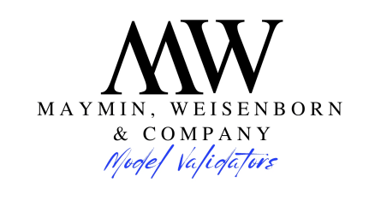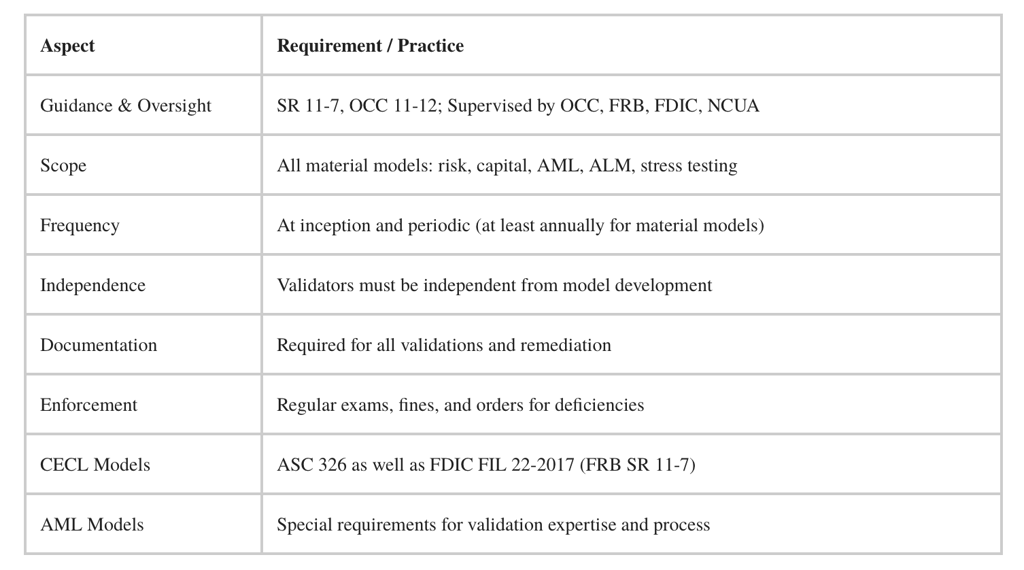TOPICS
Zac Maymin & Mark Weisenborn
Supervisory Guidance
The cornerstone of model validation regulation in the U.S. remains the Supervisory Guidance on Model Risk Management (SR 11-7), originally issued by the Federal Reserve and the OCC, and later adopted by the FDIC. It requires banks to establish comprehensive frameworks for model risk management, including initial and periodic model validation.
Regulatory Agencies
Oversight is led by federal agencies such as the OCC, FRB, FDIC, and NCUA. These bodies outline validation standards, conduct examinations, and issue enforcement actions for non-compliance or deficiencies.
Frequency
Models must be independently validated at inception and periodically—at least annually or more often for higher-risk models.
Independence
Validators must be organizationally independent from model development teams to ensure unbiased assessments.
Scope
Validation covers all material models, including those for credit risk, capital adequacy (stress testing), anti-money laundering (AML/BSA), asset/liability management, and more.
Process Components
Comprehensive validation includes reviewing conceptual soundness, data integrity, model performance (outcome analysis), proper implementation, and ongoing monitoring.
Documentation
All validation activities, findings, and remediation actions must be clearly documented and subject to internal audit.
Expanding Focus
Regulation now applies to banks of all sizes, not just large institutions, especially for critical models such as those used for AML compliance.
Enforcement
Failures in model validation have resulted in significant enforcement actions and fines, with regulators demanding prompt remediation. Regulators may inquire on the qualifications of validators, including the technical background and ability to test system implementation.
Ongoing Updates
Regulatory agencies continually update guidance and expectations, with 2025 seeing an emphasis on governance, independent review, and validation transparency.
Stress Testing
For large banks, the Federal Reserve's annual stress tests use independently validated supervisory models. The process is overseen by dedicated model validation groups and an external Model Validation Council of academic experts.
AML Models
OCC 11-12 guidance requires banks to validate both internally developed and vendor AML models. Validators must have expertise in money laundering and financial investigations, and proper model documentation is mandatory.


